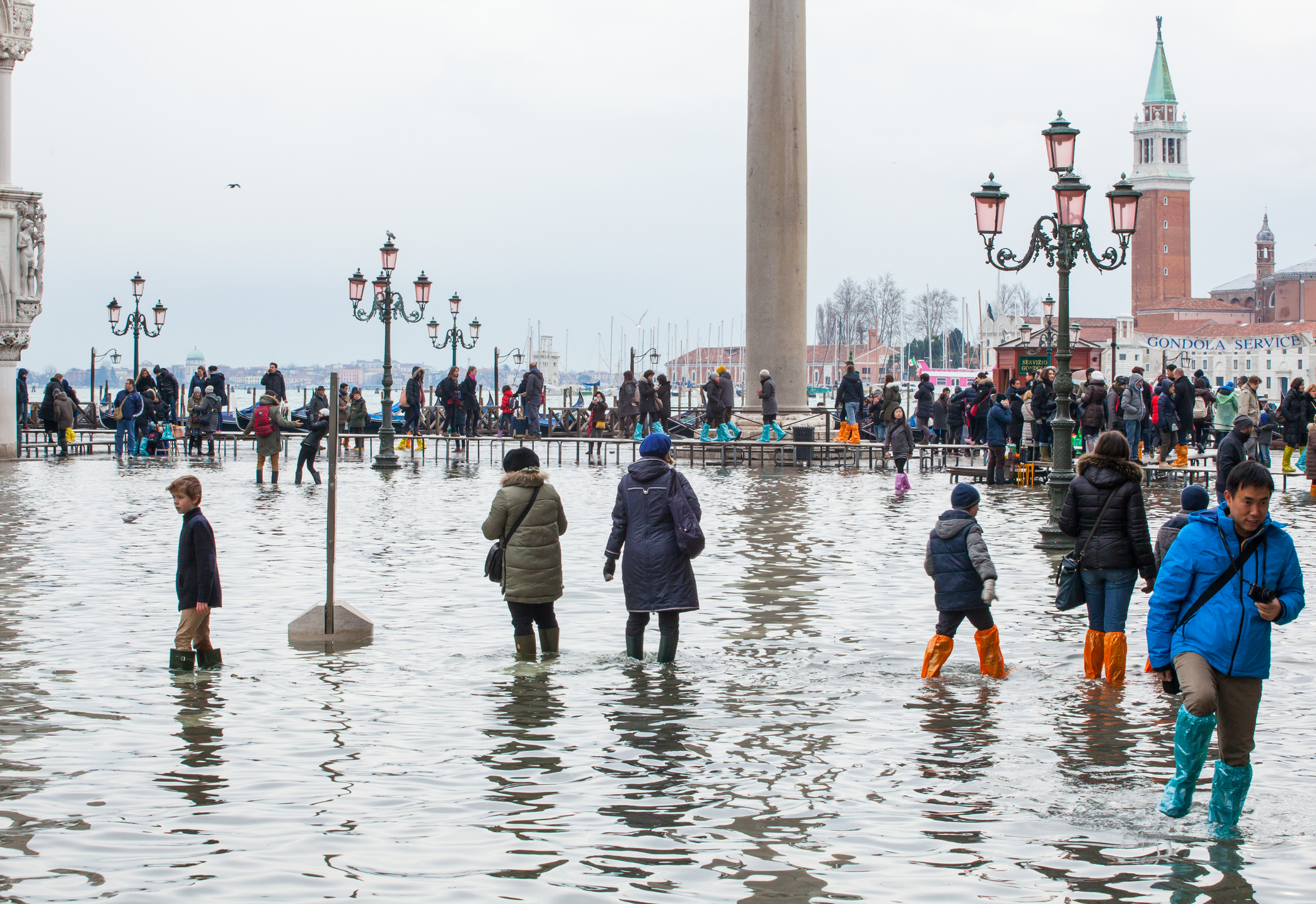Rome, Florence, Pisa, Volterra, and Venice suffered heavy consequences from days of heavy rain: Venice submerged, Pisan towns partially evacuated, medieval walls collapsed, and Romans escaping to rooftops following landslides and floods of the rivers Tiber and Arno.
The severe weather has affected Italy from North to South: Liguria (Northwest Italy) declared a state of emergency after two weeks of rain caused an estimated 350 million euros worth of damages. In Emilia Romagna the storms made the situation even worse in areas already injured by the 2012 earthquake.
In Belluno where 30,000 families spent days without electricity and in Cortina d’Ampezzo, the pearl of Dolomites (both in Veneto), as well as several towns in the Alps (Northeastern Italy), schools were closed as a result of heavy snowfall and blackouts. In Friuli the Army cleared streets of snow and in Trentino, where there is a high risk of avalanches, a mass of snow invaded the roadway in Vajont, where 51 years ago a dramatic landslide erased an entire small town along with its almost 2,000 inhabitants.
Nor did the South escape the weather’s fury. The island of Capri was battered by waves flooding its coast. Snow covered Etna in Sicily while the volcano spewed out lava. High winds battered seas and land in Apulia and Calabria.
In Rome some 3,000 calls for aid were made to the 118 emergency helpline within the space of few hours on Friday, as the city was engulfed by torrential rains and floods: 90-130 mm in 12 hours, amounting to 15% of an entire year’s average rainfall.
Shops and basements were flooded after the river Tiber overflowed its banks. Some Romans took to the rooftops after seeing flood waters rise as high as three meters. A landslide sent a wall of rain-soaked earth and mud hurtling down to engulf huts inhabited by immigrants and the poor near the Vatican. Around Viterbo, north of Rome, a local train derailed because of bad weather, though no one was hurt.
Also in Tuscany some 1,300 people were evacuated as rains continued to swell rivers and streams. Families were forced from their homes, and fire fighters worked with amphibious vehicles and organized helicopter surveillance trips of the area. In Florence and Pisa and along the river Arno the water levels have not reached these levels in 15-20 years.
Erosion imperiled buildings along the Arno in the town of San Miniato, as the river consumed a 20 meter stretch of its embankment.
In Volterra, the city of alabaster, a 30-meter portion of the medieval wall surrounding the town’s historical center collapsed under the torrential rain. The municipal authorities ordered the evacuation of many residents and the closure of local elementary and high schools for the duration of the storm emergency.
Incessant storms submerged Venice too: rain-swollen seasonal high tides rose 140 cm above average sea level. A third of Venice was under water as it passed the 125 cm mark. In the high-tide season, from autumn to spring, water routinely spills over the city’s banks, flooding its streets and squares and occasionally threatening to set new records, as happened last week. The highest-ever “acqua alta” phenomenon came during the great flood of 1966, at 194 cm, when waters caused huge damage.































